Fatima Camarillo Castillo
Fatima Camarillo Castillo is an associate scientist and training coordinator working with CIMMYT’s Global Wheat Program, based in Mexico.
Fatima Camarillo Castillo is an associate scientist and training coordinator working with CIMMYT’s Global Wheat Program, based in Mexico.
Scientists at the International Maize and Wheat Improvement Center (CIMMYT) have been harnessing the power of drones and other remote sensing tools to accelerate crop improvement, monitor harmful crop pests and diseases, and automate the detection of land boundaries for farmers.
A crucial step in crop improvement is phenotyping, which traditionally involves breeders walking through plots and visually assessing each plant for desired traits. However, ground-based measurements can be time-consuming and labor-intensive.
This is where remote sensing comes in. By analyzing imagery taken using tools like drones, scientists can quickly and accurately assess small crop plots from large trials, making crop improvement more scalable and cost-effective. These plant traits assessed at plot trials can also be scaled out to farmers’ fields using satellite imagery data and integrated into decision support systems for scientists, farmers and decision-makers.
Here are some of the latest developments from our team of remote sensing experts.

Measuring plant height with high-powered drones
A recent study, published in Frontiers in Plant Science validated the use of drones to estimate the plant height of wheat crops at different growth stages.
The research team, which included scientists from CIMMYT, the Federal University of Viçosa and KWS Momont Recherche, measured and compared wheat crops at four growth stages using ground-based measurements and drone-based estimates.
The team found that plant height estimates from drones were similar in accuracy to measurements made from the ground. They also found that by using drones with real-time kinematic (RTK) systems onboard, users could eliminate the need for ground control points, increasing the drones’ mapping capability.
Recent work on maize has shown that drone-based plant height assessment is also accurate enough to be used in maize improvement and results are expected to be published next year.
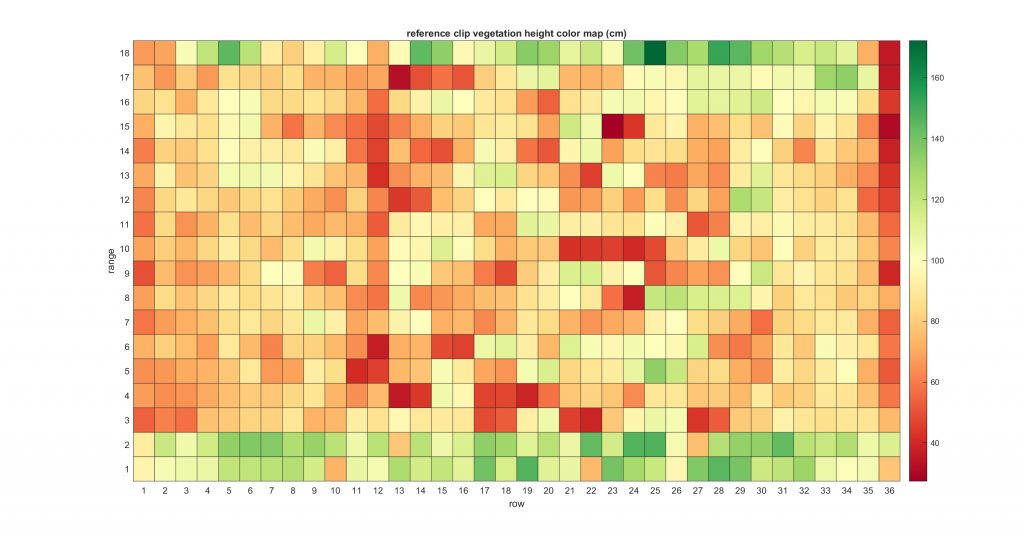
Advancing assessment of pests and diseases
CIMMYT scientists and their research partners have advanced the assessment of Tar Spot Complex — a major maize disease found in Central and South America — and Maize Streak Virus (MSV) disease, found in sub-Saharan Africa, using drone-based imaging approach. By analyzing drone imagery, scientists can make more objective disease severity assessments and accelerate the development of improved, disease-resistant maize varieties. Digital imaging has also shown great potential for evaluating damage to maize cobs by fall armyworm.
Scientists have had similar success with other common foliar wheat diseases, Septoria and Spot Blotch with remote sensing experiments undertaken at experimental stations across Mexico. The results of these experiments will be published later this year. Meanwhile, in collaboration with the Federal University of Technology, based in Parana, Brazil, CIMMYT scientists have been testing deep learning algorithms — computer algorithms that adjust to, or “learn” from new data and perform better over time — to automate the assessment of leaf disease severity. While still in the experimental stages, the technology is showing promising results so far.
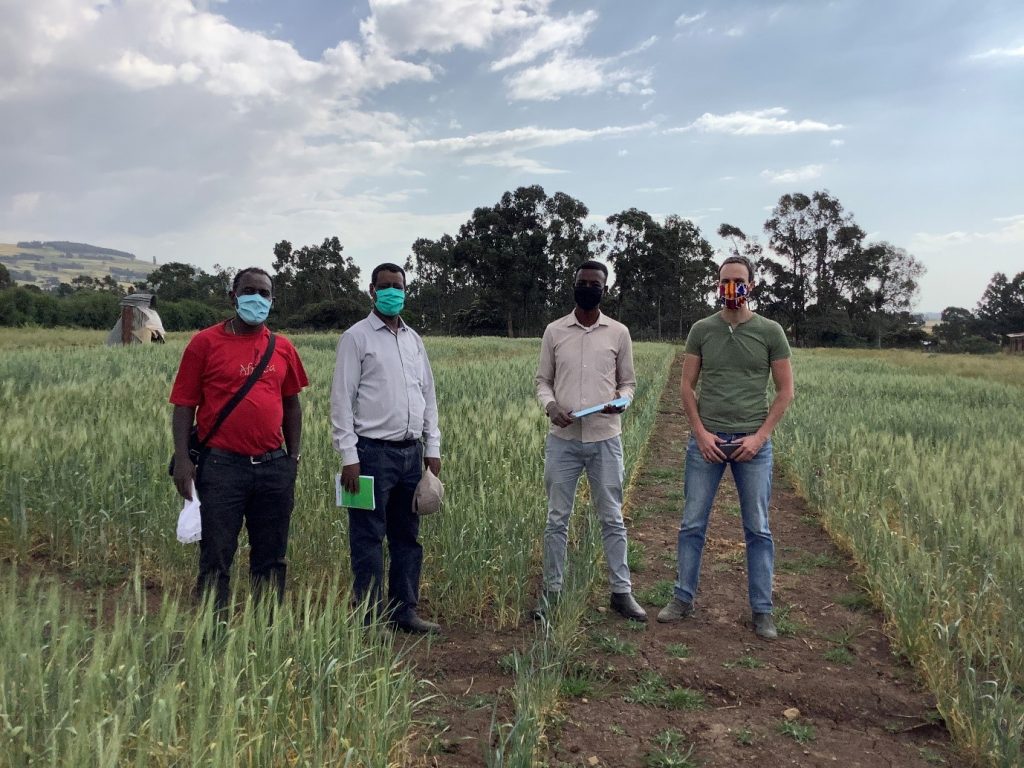
Improving forecasts for crop disease early warning systems
CIMMYT scientists, in collaboration with Université catholique de Louvain (UCLouvain), Cambridge University and the Ethiopian Institute of Agricultural Research (EIAR), are currently exploring remote sensing solutions to improve forecast models used in early warning systems for wheat rusts. Wheat rusts are fungal diseases that can destroy healthy wheat plants in just a few weeks, causing devastating losses to farmers.
Early detection is crucial to combatting disease epidemics and CIMMYT researchers and partners have been working to develop a world-leading wheat rust forecasting service for a national early warning system in Ethiopia. The forecasting service predicts the potential occurrence of the airborne disease and the environmental suitability for the disease, however the susceptibility of the host plant to the disease is currently not provided.
CIMMYT remote sensing experts are now testing the use of drones and high-resolution satellite imagery to detect wheat rusts and monitor the progression of the disease in both controlled field trial experiments and in farmers’ fields. The researchers have collaborated with the expert remote sensing lab at UCLouvain, Belgium, to explore the capability of using European Space Agency satellite data for mapping crop type distributions in Ethiopia. The results will be also published later this year.
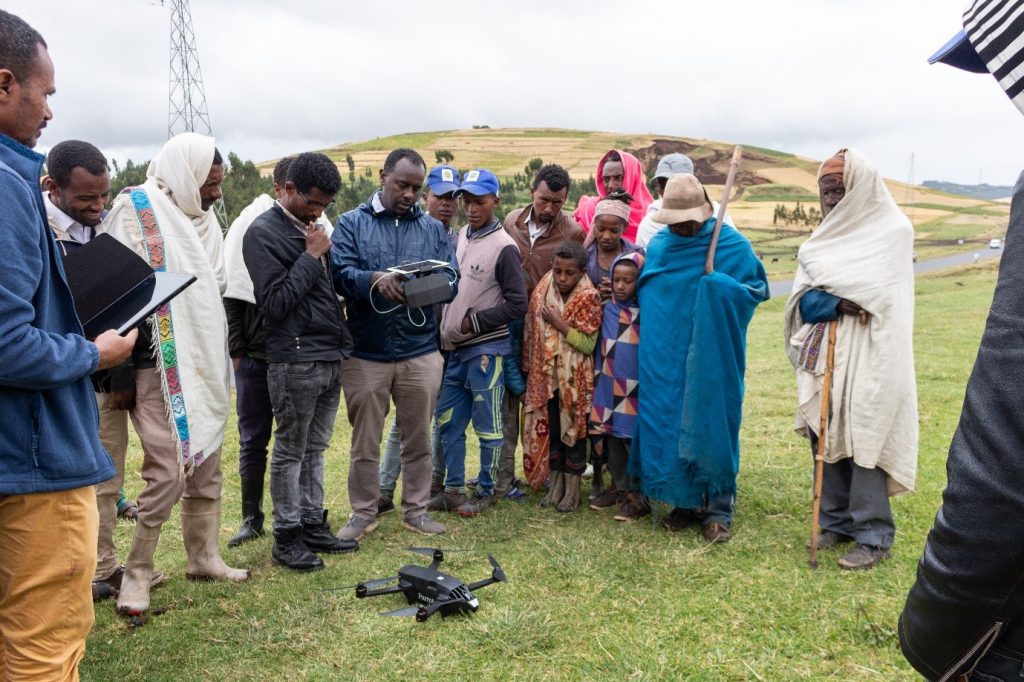
Delivering expert irrigation and sowing advice to farmers phones
Through an initiative funded by the UK Space Agency, CIMMYT scientists and partners have integrated crop models with satellite and in-situ field data to deliver valuable irrigation scheduling information and optimum sowing dates direct to farmers in northern Mexico through a smartphone app called COMPASS — already available to iOS and Android systems. The app also allows farmers to record their own crop management activities and check their fields with weekly NDVI images.
The project has now ended, with the team delivering a webinar to farmers last October to demonstrate the app and its features. Another webinar is planned for October 2021, aiming to engage wheat and maize farmers based in the Yaqui Valley in Mexico.
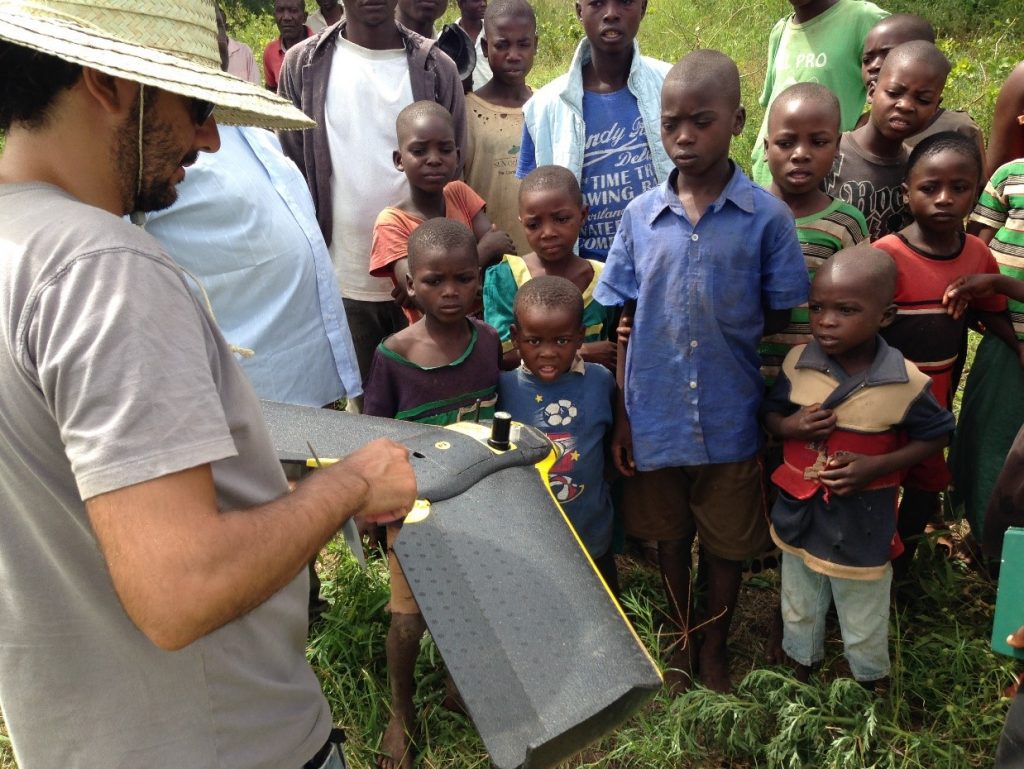
Detecting field boundaries using high-resolution satellite imagery
In Bangladesh, CIMMYT scientists have collaborated with the University of Buffalo, USA, to explore how high-resolution satellite imagery can be used to automatically create field boundaries.
Many low and middle-income countries around the world don’t have an official land administration or cadastre system. This makes it difficult for farmers to obtain affordable credit to buy farm supplies because they have no land titles to use as collateral. Another issue is that without knowing the exact size of their fields, farmers may not be applying to the right amount of fertilizer to their land.
Using state of the art machine learning algorithms, researchers from CIMMYT and the University of Buffalo were able to detect the boundaries of agricultural fields based on high-resolution satellite images. The study, published last year, was conducted in the delta region of Bangladesh where the average field size is only about 0.1 hectare.

Developing climate-resilient wheat
CIMMYT’s wheat physiology team has been evaluating, validating and implementing remote sensing platforms for high-throughput phenotyping of physiological traits ranging from canopy temperature to chlorophyll content (a plant’s greenness) for over a decade. Put simply, high-throughput phenotyping involves phenotyping a large number of genotypes or plots quickly and accurately.
Recently, the team has engaged in the Heat and Drought Wheat Improvement Consortium (HeDWIC) to implement new high-throughput phenotyping approaches that can assist in the identification and evaluation of new adaptive traits in wheat for heat and drought.
The team has also been collaborating with the Accelerating Genetic Gains in Maize and Wheat (AGG) project, providing remote sensing data to improve genomic selection models.
Cover photo: An unmanned aerial vehicle (UAV drone) in flight over CIMMYT’s experimental research station in Ciudad Obregon, Mexico. (Photo: Alfredo Saenz/CIMMYT)
This tribute to the life and work of Sanjaya Rajaram, one of Norman Borlaug’s most impactful collaborators, also flags CIMMYT’s contribution to improving livelihoods and fostering more productive sustainable maize and wheat farming in low- and middle-income countries.
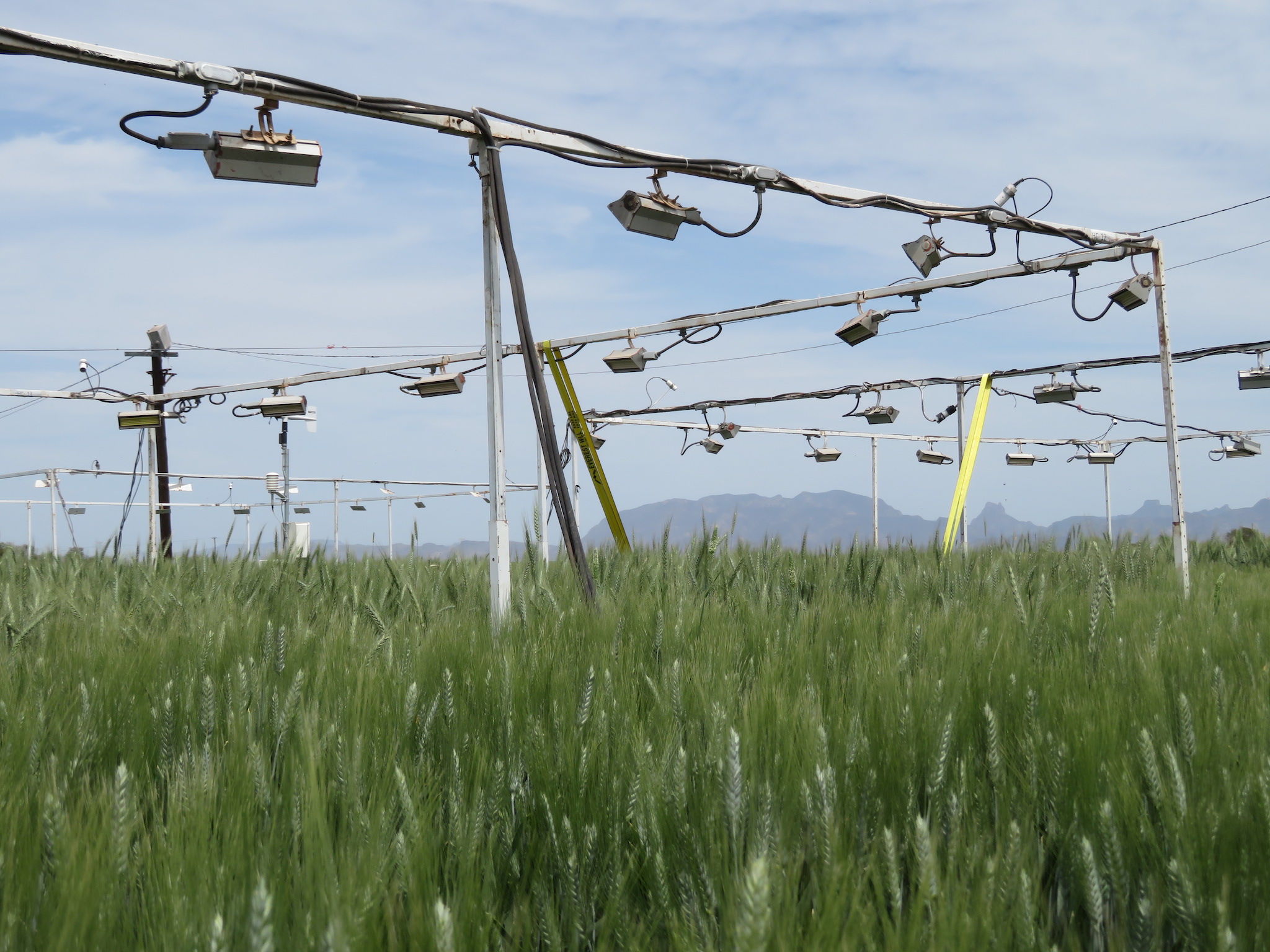
The International Maize and Wheat Improvement Center (CIMMYT) and the John Innes Centre (JIC) have announced a strategic collaboration for joint research, knowledge sharing and communications, to further the global effort to develop the future of wheat.
Wheat, a cornerstone of the human diet that provides 20% of all calories and protein consumed worldwide, is threatened by climate change-related drought and heat, as well as increased frequency and spread of pest and disease outbreaks. The new collaboration, building on a history of successful joint research achievements, aims to harness state-of-the-art technology to find solutions for the world’s wheat farmers and consumers.
“I am pleased to formalize our longstanding partnership in wheat research with this agreement,” said CIMMYT Deputy Director General for Research Kevin Pixley. “Our combined scientific strengths will enhance our impacts on farmers and consumers, and ultimately contribute to global outcomes, such as the Sustainable Development Goal of Zero Hunger.”
Director of the John Innes Centre, Professor Dale Sanders commented, “Recognizing and formalizing this long-standing partnership will enable researchers from both institutes to focus on the future, where the sustainable development of resilient crops will benefit a great many people around the world.”
Thematic areas for collaboration
Scientists from CIMMYT and JIC will work jointly to apply cutting-edge approaches to wheat improvement, including:
Plans for future collaborations include establishing a new laboratory in Norwich, United Kingdom, as part of the Health Plants, Healthy People, Healthy Plant (HP3) initiative.
Bringing innovations to farmers
An important goal of the collaboration between CIMMYT and JIC is to expand the impact of the joint research breakthroughs through knowledge sharing and capacity development. Stakeholder-targeted communications will help expand the reach and impact of these activities.
“A key element of this collaboration will be deploying our innovations to geographically diverse regions and key CIMMYT partner countries that rely on smallholder wheat production for their food security and livelihoods,” said CIMMYT Global Wheat Program Director Alison Bentley.
Capacity development and training will include collaborative research projects, staff and student exchanges and co-supervision of graduate students, exchange of materials and data, joint capacity building programs, and shared connections to the private sector. For example, plans are underway for a wheat improvement summer school for breeders in sub-Saharan African countries and an internship program to work on the Mobile And Real-time PLant disease (MARPLE) portable rust testing project in Ethiopia.
INTERVIEW OPPORTUNITIES:
Alison Bentley – Director, Global Wheat Program, International Maize and Wheat Improvement Center (CIMMYT)
Dale Sanders – Director, John Innes Centre
OR MORE INFORMATION, OR TO ARRANGE INTERVIEWS, CONTACT THE MEDIA TEAM:
Marcia MacNeil, Head of Communications, CIMMYT. m.macneil@cgiar.org
Rodrigo Ordóñez, Communications Manager, CIMMYT. r.ordonez@cgiar.org
ABOUT CIMMYT:
The International Maize and Wheat Improvement Center (CIMMYT) is the global leader in publicly-funded maize and wheat research and related farming systems. Headquartered near Mexico City, CIMMYT works with hundreds of partners throughout the developing world to sustainably increase the productivity of maize and wheat cropping systems, thus improving global food security and reducing poverty. CIMMYT is a member of the CGIAR System and leads the CGIAR Research Programs on Maize and Wheat and the Excellence in Breeding Platform. The Center receives support from national governments, foundations, development banks and other public and private agencies. For more information, visit staging.cimmyt.org.
ABOUT THE JOHN INNES CENTRE:
The John Innes Centre is an independent, international centre of excellence in plant science, genetics and microbiology. Our mission is to generate knowledge of plants and microbes through innovative research, to train scientists for the future, to apply our knowledge of nature’s diversity to benefit agriculture, the environment, human health, and wellbeing, and engage with policy makers and the public.
We foster a creative, curiosity-driven approach to fundamental questions in bio-science, with a view to translating that into societal benefits. Over the last 100 years, we have achieved a range of fundamental breakthroughs, resulting in major societal impacts. Our new vision Healthy Plants, Healthy People, Healthy Planet (www.hp3) is a collaborative call to action. Bringing knowledge, skills and innovation together to create a world where we can sustainably feed a growing population, mitigate the effects of climate change and use our understanding of plants and microbes to develop foods and discover compounds to improve public health.
The John Innes Centre is strategically funded by the UKRI-BBSRC (Biotechnology and Biological Sciences Research Council), and is supported by the John Innes Foundation through provision of research accommodation, capital funding and long-term support of the Rotation PhD programme.
For more information about the John Innes Centre visit our website: www.jic.ac.uk.
Matthew Reynolds, Distinguished Scientist and Head of Wheat Physiology at CIMMYT, talked to The Guardian producer Patrick Greenfield about the process to create climate- and heat-resistant crops.
Scientists at CIMMYT expect to sharply ramp up new wheat varieties enriched with zinc that can boost the essential mineral for millions of poor people with deficient diets, the institute’s head told Reuters.
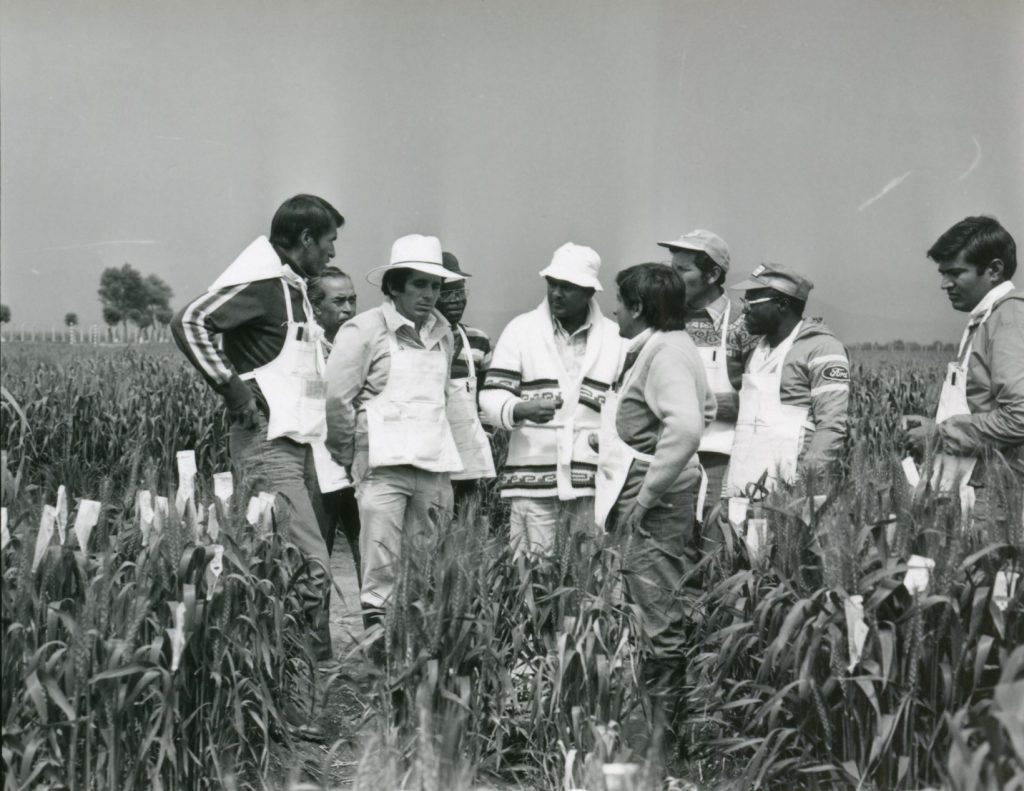
In 1966, the International Maize and Wheat Improvement Center (CIMMYT) hosted a training event that was unlike any class the students had attended before. The students came from all over the world, the classroom moved between different environments in Mexico, and their teacher was Norman Borlaug. Over the course of 6 months, national agricultural partners, graduate students, and future research leaders from all over the world studied under Borlaug, one of the most famous and impactful agronomists in history.
Since its inception in 1966, the CIMMYT Global Wheat Program (GWP) annual training has hosted more than 1700 scientists from 99 countries. The aim of this program is to improve the breeding skills and research capacity of national partners, research staff and graduate students from countries where wheat is a major staple food crop. Along the way, the researchers expand their professional networks and share experiences in agronomy from around the world.
The CIMMYT GWP training program staff recently caught up with some graduates from the course to find out what their biggest takeaways were from the experience.
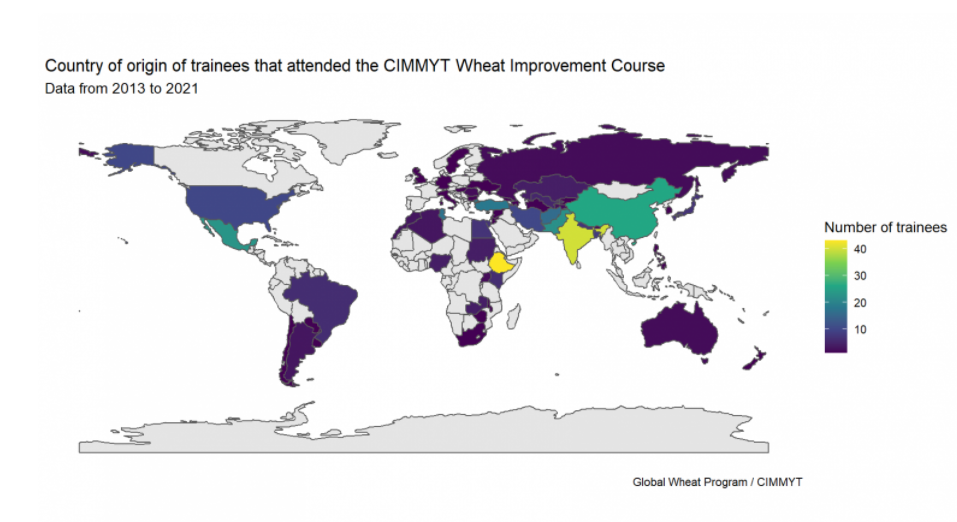
Meet the students
Muhammad Ishaq, a senior research officer working in wheat breeding at the Barani Agricultural Research Station (BARS) in Pakistan participated in the training program in 2019. The most important lesson he brought home was that the success of a wheat breeding program depends on problem-based breeding for target environments. He will always remember the interactions with CIMMYT scientists during his stay in Mexico. “This is a clear example of working together in partnership for global impact,” said Ishaq.
Lezaan Hess, a young academic and plant breeder at Stellenbosch University in South Africa participated in the program in 2019. Lezaan emphasizes the importance of this training in starting her professional career and says she will always remember the hard work and dedication of the CIMMYT wheat breeding teams. “It will keep inspiring me to work hard, stay committed and dedicated, and to collaborate to achieve greater success in the fight against world hunger,” said Hess.
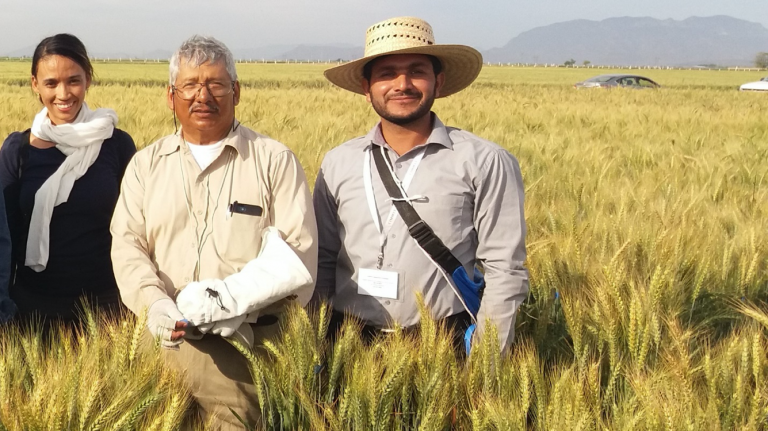
Vijay Dalvi, a young professional at DCM Shriram LtD in India, attended the training program in 2013. His biggest takeaway from the training period was improving his knowledge on selecting individual plants in early generations, rust scoring and selecting grains. “The training not only helped us understand wheat breeding, but also showed us how to work in a team,” he said. “I am still replicating CIMMYT’s way of work at my current organization, and am sharing data from CIMMYT trials to discuss ideas.”
Saima Mir, a 2017 participant, currently works as a senior scientist with the Nuclear Institute of Agriculture (NIA) in Pakistan, where two new CIMMYT-derived wheat varieties with tolerance to water-stressed environments were released in 2020. Mir was very enthusiastic about her experience in the training program.
“I wish I would have received this training at the beginning of my research career,” she explained. “[It] was a combo of conventional and highly advanced breeding techniques, lectures and hands-on practice in the laboratories, green houses and in the field.”
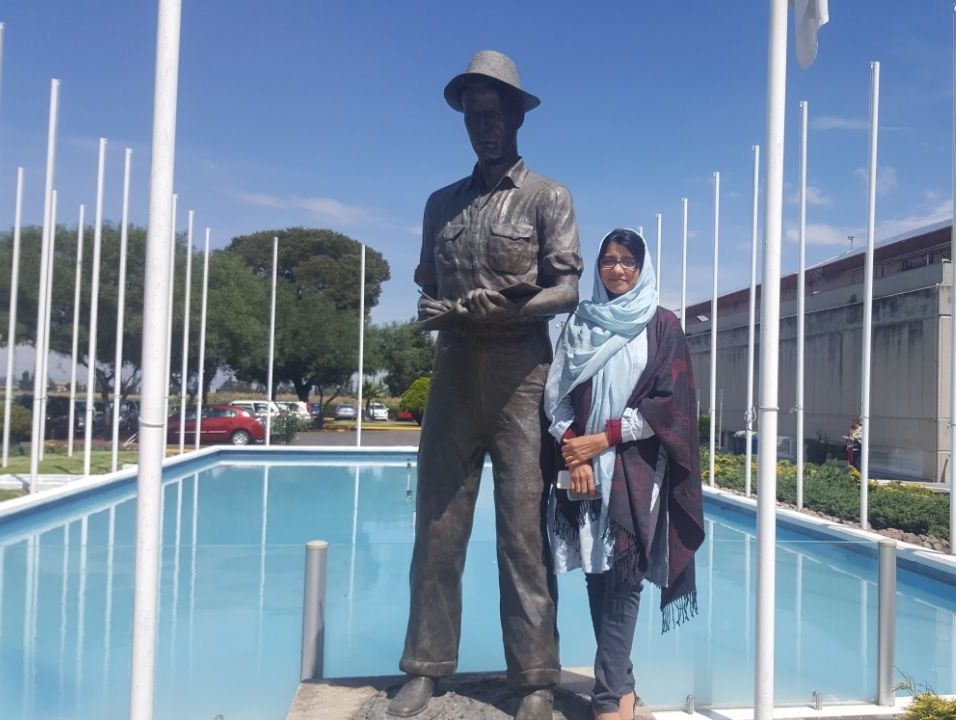
Dario Novoselovic, who is now a senior researcher at the Agricultural Institute Osijek in Croatia, attended the wheat training course in 2000. Novoselovic said he particularly enjoyed the immersive nature of the training, saying that it paved the way for his future professional career. “We were among the lucky generations [with] the opportunity to interact with and enjoy the lectures from Dr. Borlaug, you can imagine the kind of feeling and spirit [we had] after his lectures,” he said.
Sundas Waqar, who works as a scientific officer for the National Agriculture Research Centre in Islamabad, Pakistan, recalls the technical training in the CIMMYT program. “The training provided me the opportunity to connect with the world. I got promoted to my current position after completing training at CIMMYT.”
Naresh Kumar, a senior wheat breeding scientist in the Genetics Division at the Indian Agricultural Research Institute (ICAR) in New Delhi, India, took the course in 2019. “I am utilizing all the skills in my research and management activities. Collaboration with CIMMYT scientists is now quite direct and friendly,” he explained. “A key lesson was sharing knowledge and experience with partners across the world.”
A different experience for 2021
This year, CIMMYT’s signature training program looks quite different as both students and trainers navigate challenging travel and safety restrictions due to the pandemic. Since on-site training this year was not possible, GWP decided to continue these capacity building activities as many other schools have: virtually. The 2021 Basic Wheat Improvement Course went online on January 18, and — echoing the spirit of its far-reaching legacy — 68 participants from 21 different countries will still receive training this year.
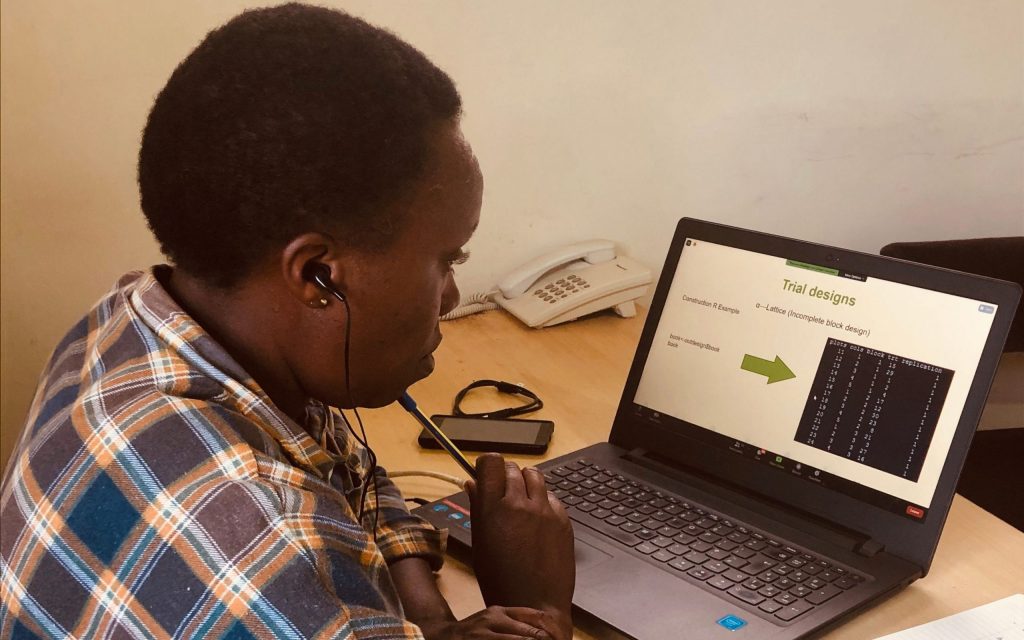
Through regenerative agriculture prices, Grupo Bimbo, a partner of CIMMYT, is revitalizing and ensuring the sustainability of Mexico’s agricultural sector.
Read more: https://www.forbes.com.mx/ad-agricultura-regenerativa-ruta-sustentable-grupo-bimbo/
Health has certainly been in the spotlight over the past year. And how could it not be?
The ongoing COVID-19 pandemic has thrown into sharp relief the fact that many groups across the world struggle to make ends meet with little daily income, have poorer housing conditions and education, fewer employment opportunities, and have little or no access to safe environments, clean water and air, food security and health services.
In light of this, the World Health Organization (WHO) is calling on leaders worldwide to ensure that everyone has living and working conditions that are conducive to good health. For many the focus will, understandably, be on access to quality health care services. But there are myriad other factors that influence our ability to lead healthy lives — from how we care for our soil, to what we eat and the air we breathe.
Joining this year’s World Health Day campaign, the International Maize and Wheat Improvement Center (CIMMYT) is highlighting five areas where it pays to think about health, and the solutions we can use to help build a healthier world for everyone.
Crop yields fall dramatically when soil conditions aren’t right, but digital nutrient management tools providing tailored fertilizer recommendations can boost farmers’ profits and productivity while reducing emissions.
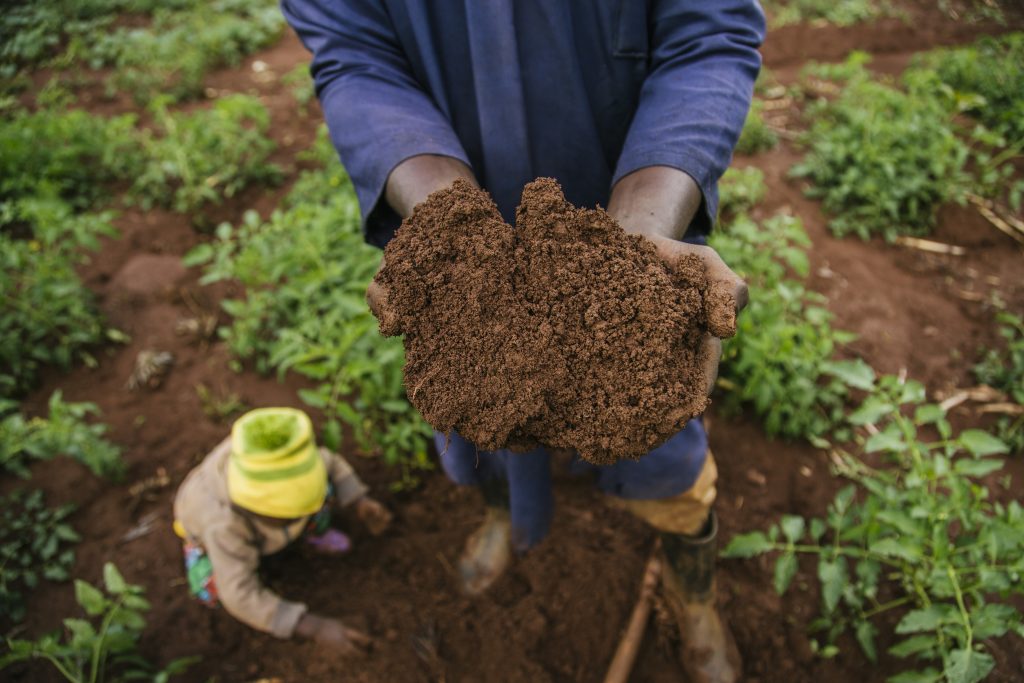
How do we ensure that germplasm reserves are not potential vectors of pest and disease transmission? The second instalment in the CGIAR International Year of Plant Health Webinar Series tackles the often-overlooked issue of germplasm health.
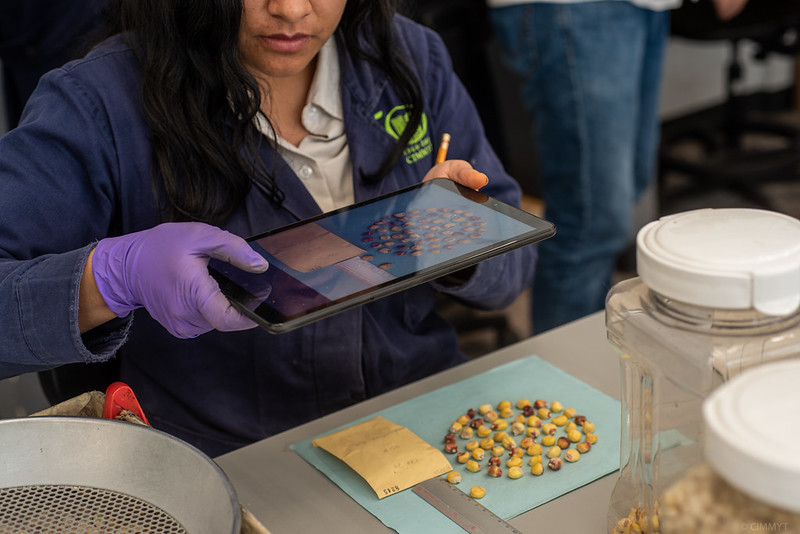
By growing maize simultaneously for both human consumption and quality animal feed, farmers can get the most out of their crops and conserve natural resources like land and water.
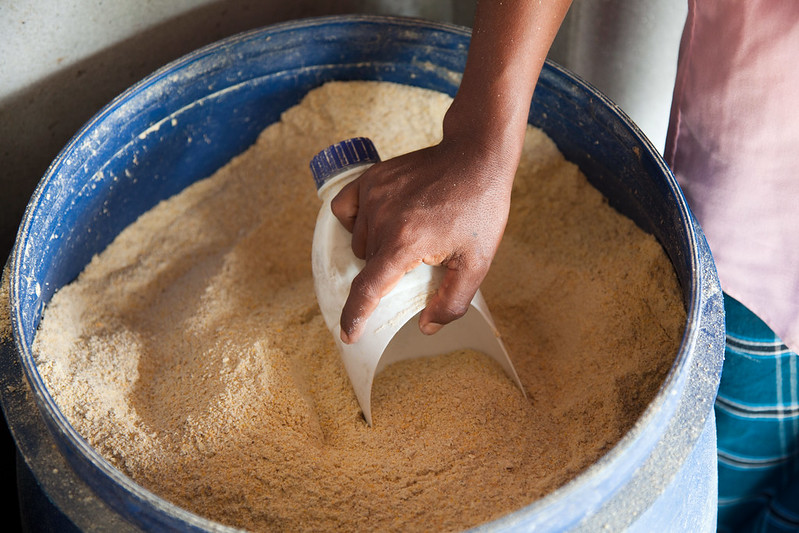
The traditional milpa intercrop — in which maize is grown together with beans, squash or other vegetable crops — can furnish a vital supply of food and nutrients for marginalized, resource-poor communities in the Americas.
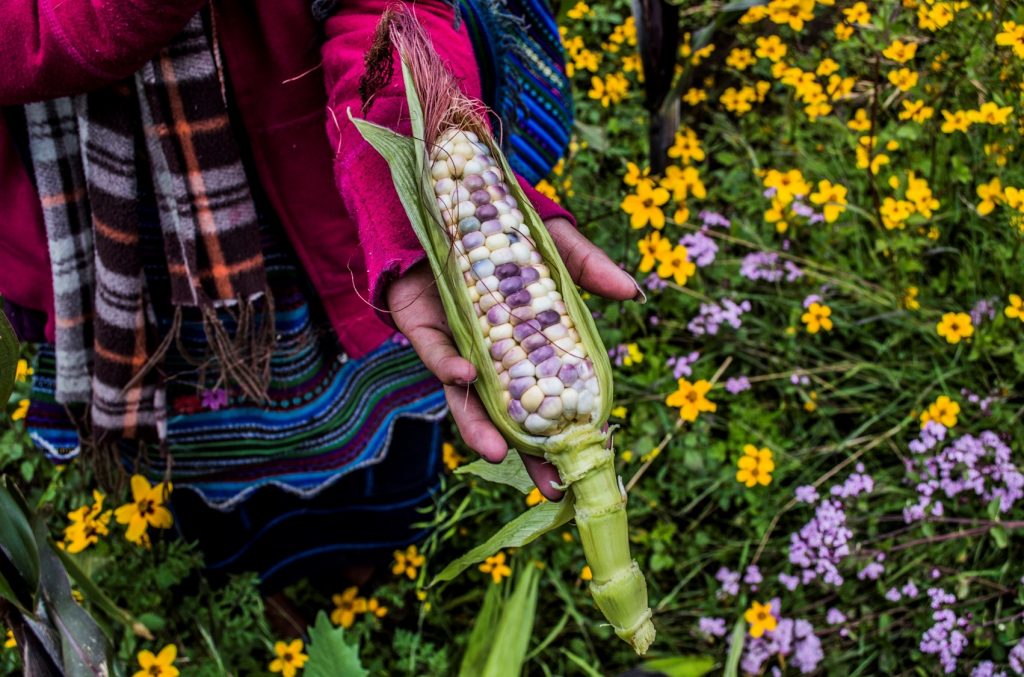
Compared to conventional tillage practices, sowing wheat directly into just-harvested rice fields without burning or removing straw or other residues can reduce severe air pollution while lessening irrigation needs.
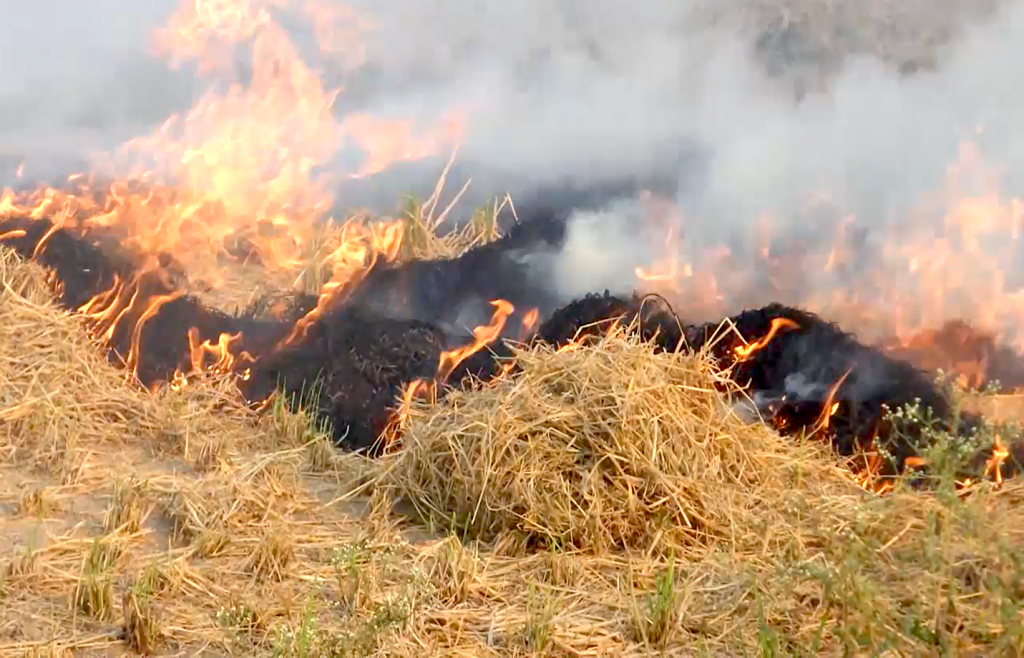
Interested in learning more about CIMMYT’s health-related work? Check out our archive of health and nutrition content.
Featured image: A farmer inspects a drought-tolerant bean plant on a trial site in Malawi. (Photo: Neil Palmer/CIAT)
Through the Sustainable Wheat and Sustainable Maize projects, Bimbo strives to ensure the sustainability of Mexico’s agricultural sector, benefitting over 940 smallholder farmers through yield enhancement and cost reduction strategies.
Read more: https://www.milenio.com/content/bimbo-impulsa-agricultura-regenerativa-maiz-trigo-mexico

The International Maize and Wheat Improvement Center (CIMMYT) will rename one of its most historic and successful wheat experimental stations in honor of Sanjaya Rajaram, a former Wheat Program director, distinguished scientist and World Food Prize laureate.
Rajaram, one of the most successful and influential wheat breeders ever, passed away in Mexico on February 17, 2021. The wheat experimental station managed by CIMMYT in Toluca, Mexico, will be renamed “Centro Experimental Sanjaya Rajaram” in his honor.
Rajaram joined CIMMYT in 1969, working alongside Nobel Prize Laureate and scientist Norman Borlaug in Mexico. Recognizing his talent and initiative, Borlaug appointed Rajaram as head of CIMMYT’s wheat breeding program when he was 29 years old. His career accomplishments include overseeing the development of more than 480 high-yielding, disease-resistant wheat varieties, which are sown today on 58 million hectares in 51 countries.
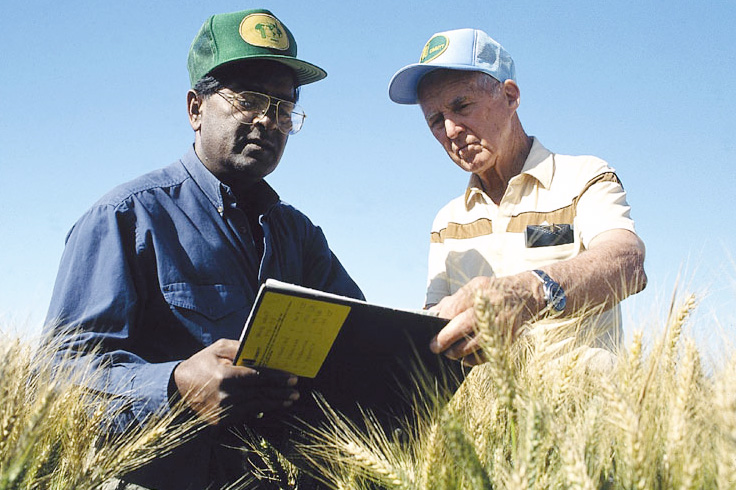
The wheat experimental station is located on the outskirts of Mexico’s fifth largest city, Toluca, about 60 kilometers southwest of Mexico City. It is a key testing location in the shuttle breeding process that Borlaug developed in the 1960s in his quest for high-yielding wheat to avert global famine — a breeding process that successfully continues to this day. It is also the site where Borlaug famously received news of his 1970 Nobel Peace Prize win.
“Dr. Rajaram was a world-renowned wheat breeder and scientist and a true hunger fighter. In 2014, he was recognized with one of the highest honors in agriculture, the World Food Prize, in acknowledgement for improving the lives of hundreds of millions of people through his work on high-yielding and disease-resistant wheat varieties grown on more than 58 million hectares throughout the world,” said CIMMYT Director General Martin Kropff. “He was an inspiring and cherished presence at CIMMYT for 40 years. His loss is felt by all of us and I am delighted to be able to honor him this way.”
“It is only fitting that a wheat experimental station crucial to Borlaug’s pioneering work be named for Dr. Rajaram, who followed in his footsteps,” said CIMMYT Chief Operating Officer, Deputy Director General for Research, and Integrated Development Program Director Bram Govaerts.
A virtual event to remember Rajaram and officially dedicate the Toluca station in his honor is tentatively planned for May.
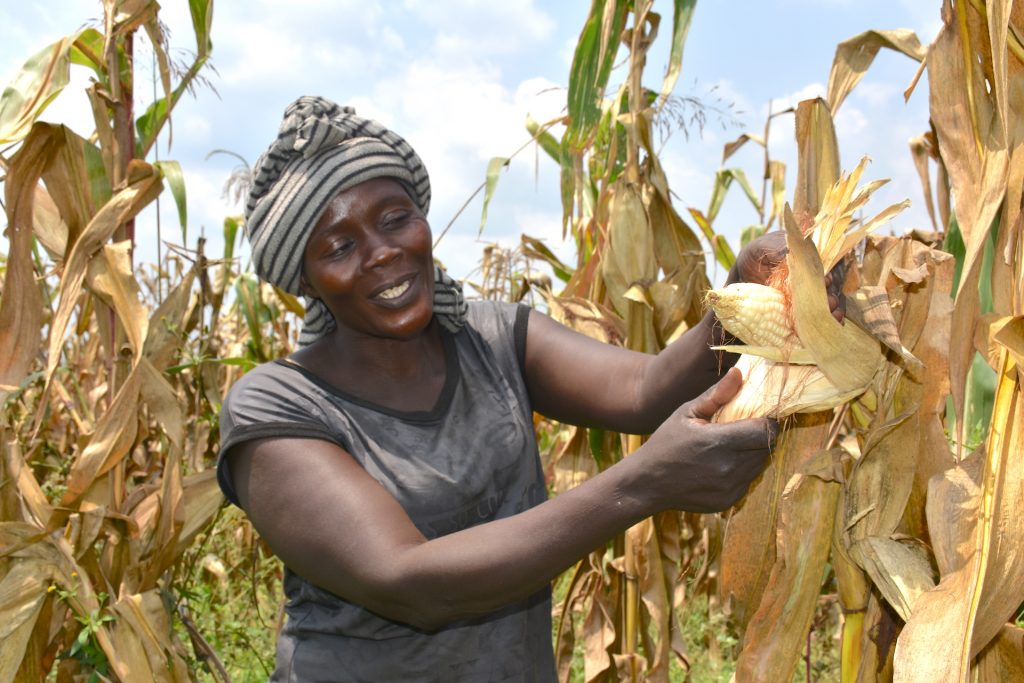
The ultimate challenge for crop breeders is to increase genetic gain of a crop: literally, to increase the crop’s yield on farmers’ fields. Wheat and maize breeders from the International Maize and Wheat Improvement Center (CIMMYT) and partner institutions are working to achieve this in record time, developing new varieties tailored for farmers’ needs that are also pest- and disease-resistant, climate-resilient, and nutritious.
This work is part of the Accelerating Genetic Gain in Maize and Wheat for Improved Livelihoods (AGG) project. Among other methods, breeders are using state-of-the-art novel tools such as genomic selection to achieve this ambitious goal.
In genomic selection, breeders use information about a plant’s genetic makeup along with data on its visible and measurable traits, known as phenotypic data, to “train” a model to predict how a cross will turn out — information known as “genomic estimated breeding values (GEBV)” — without having to plant seeds, wait for them to grow, and physically measure their traits. In this way, they save time and costs by reducing the number of selection cycles.
However, research is still ongoing about the best way to use genomic selection that results in the most accurate predictions and ultimately reduces selection cycle time. A recent publication by CIMMYT scientist Sikiru Atanda and colleagues has identified an optimal genomic selection strategy that maximizes the efficiency of this novel technology. Although this research studied CIMMYT’s maize breeding programs, AGG scientists working on wheat genetic gain and zinc nutritional content see cross-crop impacts.
Shortening a lengthy process
In the typical breeding stages, breeders evaluate parental lines to create new crosses, and advance these lines through preliminary and elite yield trials. In the process, thousands of lines are sown, grown and analyzed, requiring considerable resources. In the traditional CIMMYT maize breeding scheme, for example, breeders conduct five stages of testing to identify parental lines for the next breeding cycle and develop high yielding hybrids that meet farmers’ needs.
In the current scheme using genomic selection, breeders phenotype 50% of a bi-parental population to predict the GEBVs of the remaining un-tested 50%. Though this reduces the cost of phenotyping, Atanda and his co-authors suggest it is not optimal because the breeder has to wait three to four months for the plant to grow before collecting the phenotypic data needed to calibrate the predictive model for the un-tested 50%.
Atanda and his colleagues’ findings specify how to calibrate a model based on existing historical phenotypic and genotypic data. They also offer a method for creating “experimental” sets to generate phenotypic information when the models don’t work due to low genetic connectedness between the new population and historical data.
This presents a way forward for breeders to accelerate the early yield testing stage based on genomic information, reduce the breeding cycle time and budget, and ultimately increase genetic gain.
Regional maize breeding coordinator for Africa Yoseph Beyene explained the leap forward this approach represents for CIMMYT’s maize breeding in Africa.
“For the last 5 years, CIMMYT’s African maize breeding program has applied genomic selection using the ‘test-half-and-predict-half’ strategy,” he said. “This has already reduced operational costs by 32% compared to the traditional phenotypic selection.”
“The prediction approach shown in this paper — using historical data alone to predict untested lines that go directly to stage-two trials — could reduce the breeding cycle by a year and save the cost of testcross formation and multi-location evaluation of stage-one testing. This research contributes to our efforts in the AGG project to mainstream genomic selection in all the product profiles.”
Effective for maize and wheat
Atanda, who now works on the use of novel breeding methods to enhance grain zinc content in CIMMYT’s wheat breeding program, believes these findings apply to wheat breeding as well.
“The implications of the research in maize are the same in wheat: accelerating early testing stage and reducing the breeding budget, which ultimately results in increasing genetic gain,” he said.
CIMMYT Global Wheat Program director Alison Bentley is optimistic about the crossover potential. “It is fantastic to welcome Atanda to the global wheat program, bringing skills in the use of quantitative genetic approaches,” she said. “The use of new breeding methods such as genomic selection is part of a portfolio of approaches we are using to accelerate breeding.”
CIMMYT’s wheat breeding relies heavily on a time-tested and validated method using managed environments to test lines for a range of growing environments — from drought to full irrigation, heat tolerance and more — in CIMMYT’s wheat experimental station in Ciudad Obregón, in Mexico’s state of Sonora.
According to CIMMYT senior scientist and wheat breeder Velu Govindan, using the approaches tested by Sikiru can make this even more efficient. As a specialist in biofortification — using traditional breeding techniques to develop crops with high levels of micronutrients — Govindan is taking the lead mainstreaming high zinc into all CIMMYT improved wheat varieties.
“This process could help us identify best lines to share with partners one year earlier — and it can be done for zinc content as easily as for grain yield.”
If this study seems like an excellent fit for the AGG project’s joint focus on accelerating genetic gain for both maize and wheat, that is no accident.
“The goal of the AGG project was the focus of my research,” Atanda said. “My study has shown that this goal is doable and achievable.”
Read the study:
Maximizing efficiency of genomic selection in CIMMYT’s tropical maize breeding program
Sanjaya Rajaram, a University of Sydney alumnus recognized with the World Food Prize, was a world-renowned wheat breeder and scientist. One of the world’s leading food scientists, he died on February 17 from COVID-19 in Ciudad Obregon, Mexico.
A leader of wheat breeding and later director of CIMMYT’s Global Wheat Program, Sanjaya Rajaram passed away at the age of 78.
Recognized with the World Food Prize in 2014, he personally oversaw the development of more than 480 high-yielding, disease-resistant varieties sown on 58 million hectares in 51 countries, increasing global wheat production by more than 200 million tons during his lifetime in diverse regions across the globe.
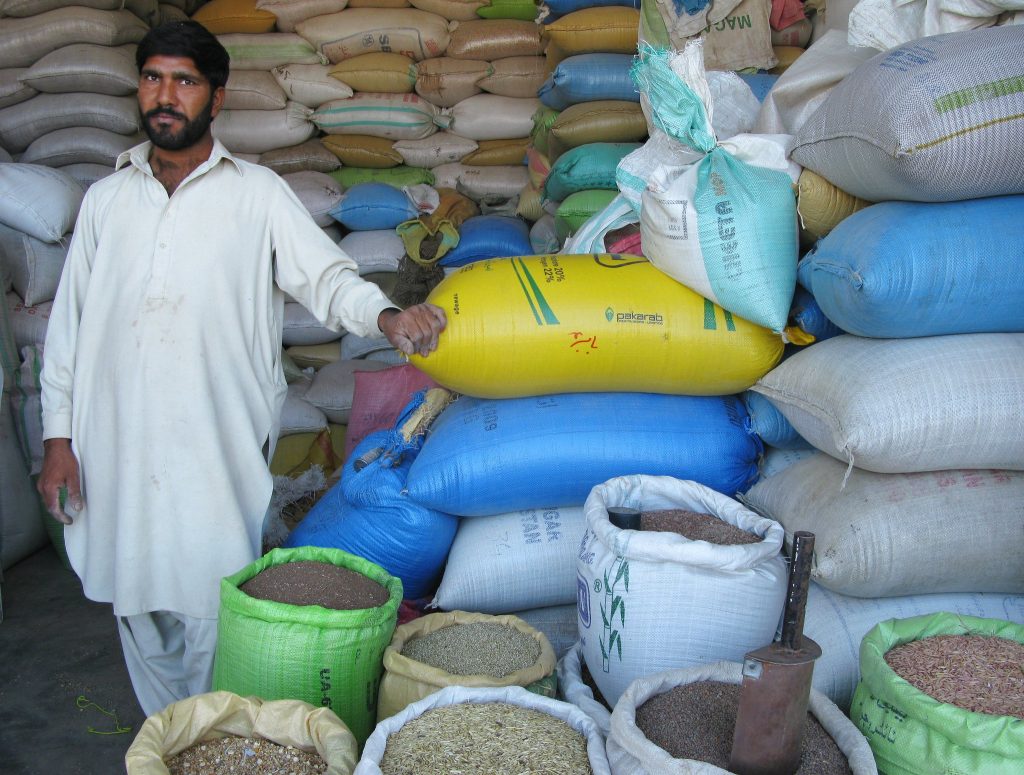
Wheat is not just an essential part of the Pakistani diet, but also absolutely critical to the country’s economy and to the farmers who cultivate it. The government of Pakistan’s goal to achieve self-sufficiency in wheat production just became more attainable with the release of five new wheat varieties. These new seeds could help the country’s 8.8 million hectares of wheat-farmed area become more productive, climate-resilient and disease-resistant — a welcome development in a region where new climate change scenarios threaten sustained wheat production.
With multiple years of on-station and on-farm testing, the Wheat Research Institute (WRI) in Faisalabad, the Arid Zone Research Institute (AZRI) in Bhakhar, and the Barani Agricultural Research Institute in Chakwal released five varieties: Subhani 2021, MH-2021, Dilkash-2021, Bhakkar-20 and MA-2020.
The varieties, drawn from germplasm from the International Maize and Wheat Improvement Center (CIMMYT), were developed for different production environments in the Punjab province of Pakistan.
Dilkash-2021 was developed by WRI from a cross with a locally developed wheat line and a CIMMYT wheat line. MH-2021 and MA-2020 were selected from the CIMMYT wheat breeding germplasm through international trials and nurseries.
Subhani-21 and MA-2020 were selected from special trials assembled by CIMMYT for expanded testing, early access and genomic selection under the USAID-funded Feed the Future Innovation Lab for Applied Wheat Genomics at Kansas State University, in partnership with Cornell University and four South Asian countries (Bangladesh, India, Nepal and Pakistan).
Over the course of multiple years and locations, the new varieties exhibited a yield potential that is 5 to 20% higher than current popular varieties such as Faisalabad 2008, in addition to good grain quality and attainable yields of over 7 tons per hectare. They also showed an impressive resistance to leaf and yellow rusts, compatibility with wheat-rice and wheat-cotton farming systems, and resilience to stresses.
“It is exciting to see new varieties coming out of these collaborative projects between the Pakistani breeding programs, CIMMYT and the university teams,” said Jesse Poland, associate professor at Kansas State University and director of the Wheat Genomics Innovation Lab.
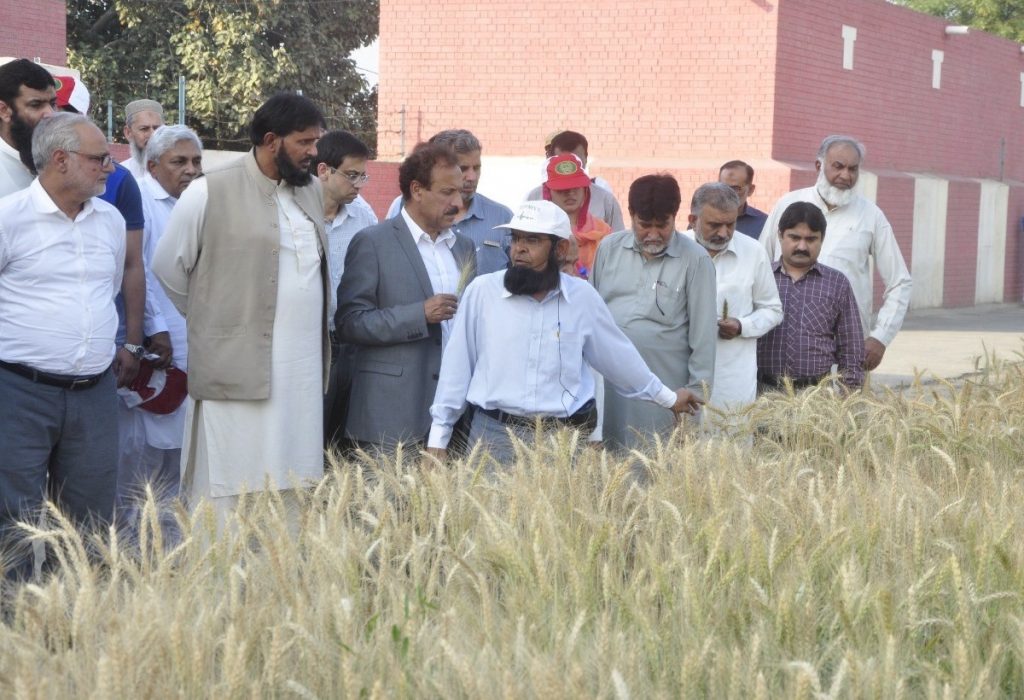
Closing the yield gap between research fields and smallholder fields
Despite all of these encouraging traits, releasing a new variety is just half of the battle. The other half is getting these new, quality seeds to markets quickly so that wheat growers can realize the benefits. A fast-track seed multiplication program for each of these varieties has been designed and implemented.
“Pakistan has started to multiply early-generation seeds of rust-resistant varieties. These will be available to seed companies for multiplication and provision to farmers in the shortest possible time,” agreed wheat breeder and WRI Director Javed Ahmad and the National Wheat Coordinator Atiq Rattu.
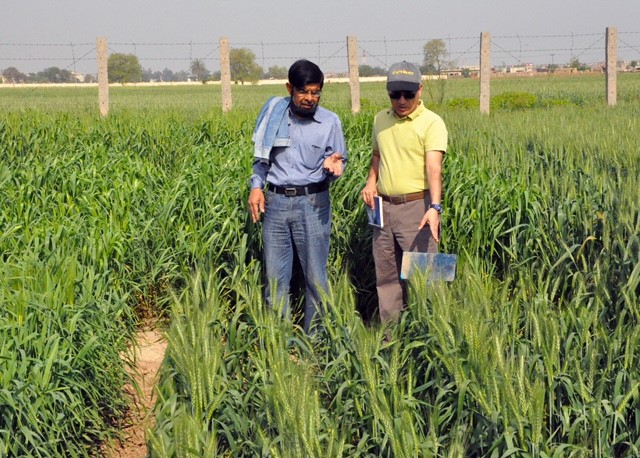
However, the current seed replacement rate is still low, mainly because new, quality seeds are rarely available at the right time, location, quantity, and price for smallholders. Strengthening and diversifying seed production of newly released varieties can be done by decentralizing seed marketing and distribution systems and engaging both public and private sector actors. Additionally, marketing and training efforts need to be improved for women, who are mostly responsible for household-level seed production and seed care.
In 2020, Pakistan harvested 25.7 million tons of wheat, up from 23.3 million tons a decade ago in 2010, which roughly matches its annual consumption of the crop. Pakistan is coming close to its goal of self-sufficiency, as outlined in the Pakistan Vision 2025, Food Security Policy 2018 and Vision for Agriculture 2030. Research shows that the public sector cannot extensively disseminate seeds alone; new policies must create an attractive environment to private sector partners, so that entrepreneurs are also attracted to the seed business. With continued efforts and a bold distribution and training effort, new releases like these will contribute to narrowing the yield gap between research stations and farmers’ fields.